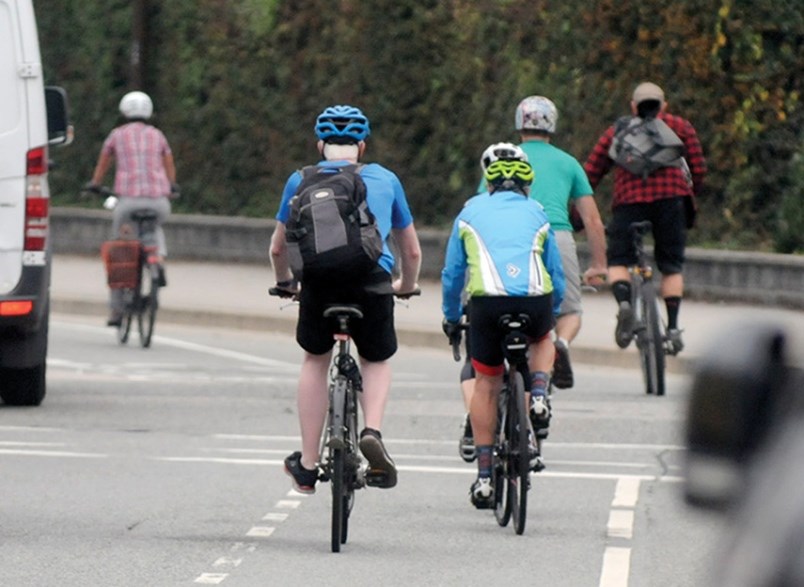Talking about gender differences is always tricky. But here I go.
I am female and I ride a bike for transportation on the North Shore. I know a bunch of women who also ride here on the shore. There’s my sister for one, after all we come from the same genes. Then there’s Diane, Jessica, Killaine, Antje, Fiona, Erika, Darlene, Sibylle, Bowinn, Karyn and umm, well there must be others. Lots. I just don’t know you. Which is totally possible.
Sorry if I didn’t mention you. But, the stats show it’s a small sisterhood. Last fall, during Bike to Work Week, HUB volunteers counted people riding off the Ironworkers Memorial Second Narrows Crossing northbound onto the North Shore. There were 273 total people riding during the two hours from 4 p.m. to 6 p.m. on a Tuesday evening in October. Of those counted, 23 per cent were women and 77 per cent men.
I’ve been on sports club and other organizational boards where if the gender balance was two in ten, there would be a major effort to find out what was wrong. Is there a chilly climate? A subtle bias that the majority can’t detect? Hours would be spent discussing how to improve equity.
Is it that women dislike bikes? Or can’t afford them? Nope. According to the US League of American Bicyclists, 60 per cent of bike owners between the ages of 17 and 28 are women. Even for age 50+, I don’t know many women living on the North Shore who don’t own a bike. But not many use one for transportation. These are women who love adventure, are sporty and will ride recreational paths and trails, or in groups for exercise and social interaction. But when asked why they don’t ride to get to work or school or shopping, almost invariably they say “It’s too dangerous.” Survey after survey as well as scholarly research corroborates that safety is the major factor dissuading women from cycling for transportation.
With traffic piling up, the increased use of SUVs and very few protected bike lanes on the North Shore, I take their point. I especially understand our fear in comparison to those who ride for transportation across the harbour in Vancouver. Vancouver’s city council made a concerted effort to build safe, separated cycling lanes, starting in 2009 with the (then super unpopular) Burrard Street Bridge lanes. Ten years on and many more kilometers (around 80 km) of safe lanes later, the number of trips made by bicycle has increased by ten-fold. Most telling is that in the City of Vancouver, the percentage of women cycling nearly doubles, to 40 per cent – still not at parity with the number of men, but almost two times higher than here.
While the City of Vancouver registers a much higher female ridership than on the North Shore, it is still not representative of the true split. But, the cycling gender gap doesn’t have to exist. In cities with established, safe bike infrastructure, more women than men use a bike for transportation. In Denmark, women make up 53 per cent of all cyclists. The Netherlands has an even higher share at 55 per cent. In Germany, 49 per cent of bike trips are made by women. Back in the 1970s, these countries were led by women to build safer bike and pedestrian infrastructure because their children were in danger. They were mothers against heavy automobiles running over kids.
It’s clear that the number of women riding acts as a proxy measure for bike infrastructure safety. On the gender-o-meter scale, the North Shore really doesn’t measure up. Calling all mothers (and sisters and daughters) against heavy automobiles running over people on bikes: let’s start asking for safe bike lanes on our North Shore.



